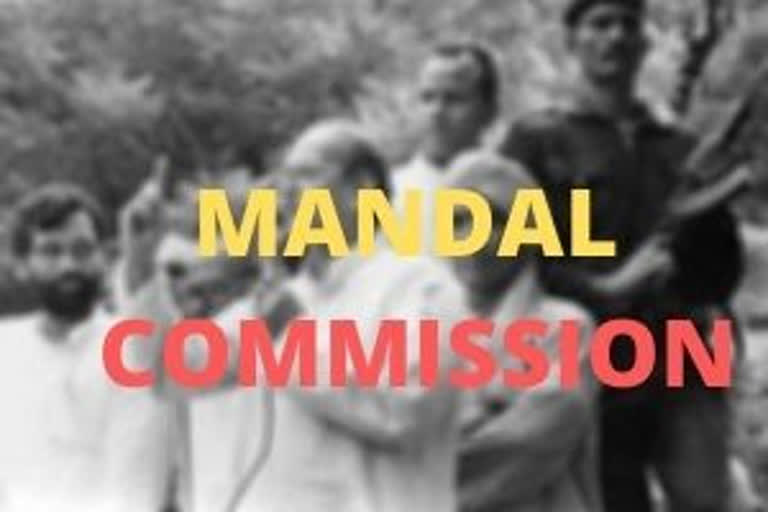Hyderabad: Thirty years ago, on August 7, 1990, the then Prime Minister V.P. Singh made a historic decision that changed the shape of Indian politics, he announced that the government has accepted Mandal commission recommendations.
Prime Minister VP Singh further in the memory of DR Bhimrao Ambedkar declared that the government has taken a decision to give reservations to the Backward class in jobs in government and public sector.
Using 11 indicators, social, educational and economic – the commission identified 3,743 different castes and communities as members of Other Backward Classes. OBC Category, it estimated, comprised 52 per cent of the total population.
However, during an anti-Mandal commission protest in Delhi, Rajeev Goswami from Deshbandhu college set himself on fire. This erupted violent protests across North India.
Also read:PM Modi inaugurates first-ever optical fibre cable project for Andaman and Nicobar Islands
Supreme court upheld the Mandal commission recommendations. It delivered a judgement on 16th November 1992 in the case of Indra Sawhney vs Union of India while upholding the 27 % reservations for OBC subject to the exclusion of socially advanced persons/sections ( creamy layer ) from amongst the OBCs and directed the government to evolve criteria for the identification of this creamy layer.
The recommendations were accepted and circulated among all ministers departments of the central and state governments in September 1993 bringing reservations for OBC communities into force.
A 2019 parliamentary panel report on OBC welfare noted that in spite of four revisions of the income criteria since 1997, the 27 per cent vacancies reserved in favour of OBCs were not being filled up. The committee said the data received from 78 ministries and departments regarding the representation of OBCs in the posts and services of the central government as on 1 March 2016 reflected poor OBC occupancy levels in central government ministries.
Further, in October 2017 the Narendra Modi government constituted a commission headed by retired Delhi High court Chief Justice G. Rohini in October 2017. Of the 6,000 castes and communities in the OBCs, only 40 such communities had gotten 50 per cent of reservation benefits for admission in central educational institutions and recruitment to the civil services.
Also read:Sushant's US-based sister counters Rhea's WhatsApp chat claim
The panel further found that close to 20 per cent of OBC communities did not get a quota benefit from 2014 to 2018.
